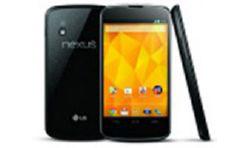
Long Term Evolution is hot this year, as a lot of OEMs and phone carriers slowly start to implement the high-speed mobile data standard. Google, however, is among those that seem to think 4G LTE isn't yet ready for primetime. This week Google announced its new flagship smartphone, the Nexus 4, built by LG Electronics. The device comes with some great specs: a 4.7-inch, 1280 x 768 IPS display that has 320 ppi; the newest 1.5-GHz quad-core Snapdragon S4 Pro processor; 2 GB of RAM; an 8-megapixel camera and a 2100 mAh battery. On top of this, the Nexus 4 comes with Android 4.2, which adds a bit of flavor over the Jelly Bean version. And the phone can be charged wirelessly by using Google's Wireless Charging Orb and comes with an NFC chip incorporated. The price? A staggering $299 for the 8-GB version and $349 for the 16-GB version. Both models are
unlocked and can be purchased starting Nov. 13 from the Google Play Store. It looks like Google and LG somehow found a way to make a high-end phone that's both cheap and looks awesome. Of course, nothing is perfect. Nexus 4 lacks LTE technology, featuring just HSPA+ radios.
Compromises and Excuses
It's disappointing for a company like Google to release a phone that doesn't have one of the hottest tech features right now. The omission immediately split tech bloggers into two camps: one that blames Google for compromising, and another that defends the company in its fight with telecom carriers. Asked by The Verge about the omission of the LTE technology, Andy Rubin said:
We certainly have a desire to offer devices on every carrier on the planet. The tactical issue is GSM vs. LTE. A lot of the networks that have deployed LTE haven't scaled completely yet—they're hybrid networks.
They'll do their old thing, and they'll do LTE, which means the devices need both radios built into them. For now, we're gonna sit back and let those networks evolve. Two radios in a device right now certainly raises the cost and diminishes battery life. When we did the Galaxy Nexus with LTE, we had to do just that, and it just wasn't a great user experience.
It's possible to do it right, but that's not where we'll put our resources initially. Tactically, we want to make sure the devices are available for every network on the planet.
For Android users that were hoping to get a clean Android experience from an LTE smartphone, it's not a great excuse.
LTE's Not the Problem
We know that Google's main problem is with carriers and not with unscaled LTE, since Nexus 4 was inspired by LG's Optimus G smartphone, which features both LTE and improved battery performance. I can only assume that Google tried to make deals with the biggest U.S. carriers, but the negotiations broke down somewhere around over-the-air Android updates, carrier-branded app bloatware, or the use of Google Wallet. LTE is expanding fast both in the U.S. and Europe, and Google is taking a risk by not including it in the Nexus 4. Of course, this could change in a matter of weeks if and when they make a deal with other carriers—just like they did with Galaxy Nexus. Overall, I think Google is trying to force the hands of carriers to get the same kind of deal Apple has. It's a risky compromise to make on a device meant to compete with Apple, Samsung and Nokia with top specs and killer prices from $299.
It's Still a Ferrari
On the other hand, I don't understand why some users complain that a phone doesn't incorporate NFC, wireless charging or LTE. Sure, everyone wants to have the latest smartphone with the most advanced technologies, but why can't users be happy when they can buy a great device at such a low price? It's like owning a Ferrari while living with your parents. The arrangements may suck, but you still own a Ferrari. LTE does makes sense on a tablet, a laptop or any other big device for those who need to download or move large amounts of files fast or to stream HD content. But for phones, well, a survey conducted in the U.S. by Piper Jaffray recently revealed that
47 percent of the U.S. consumers don't think they need 4G LTE technology. So where's the rush? I think it's worth having a good 3G or HSPA+ signal everywhere, rather than a faster download speed just in the center of some cities. When LTE reaches the same coverage as 3G, it will be worth using it non-stop everywhere. But right now, LTE is in the same situation as the NFC chip: both are great innovations, not yet ready to take over the world.
Related Links

